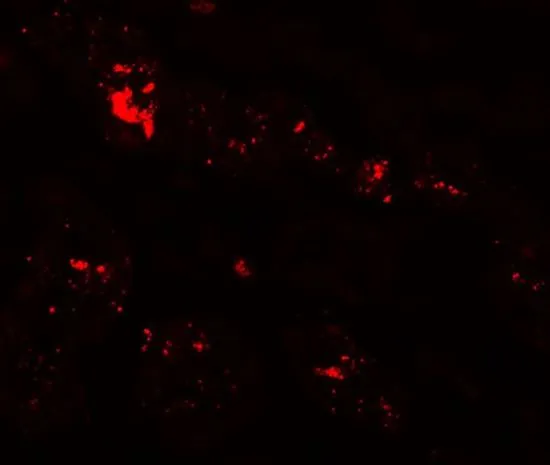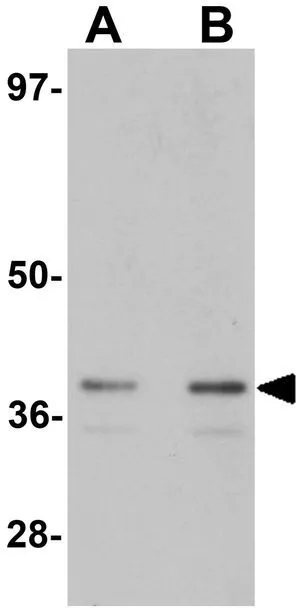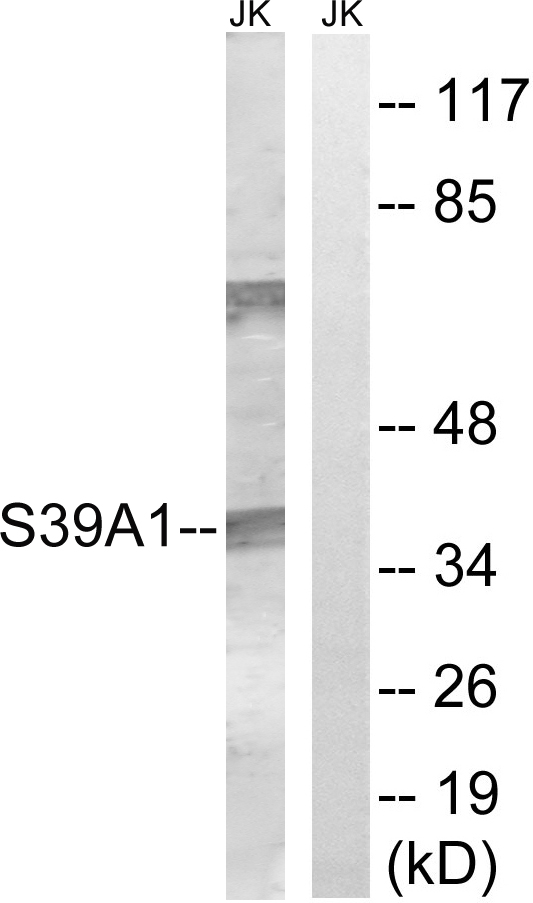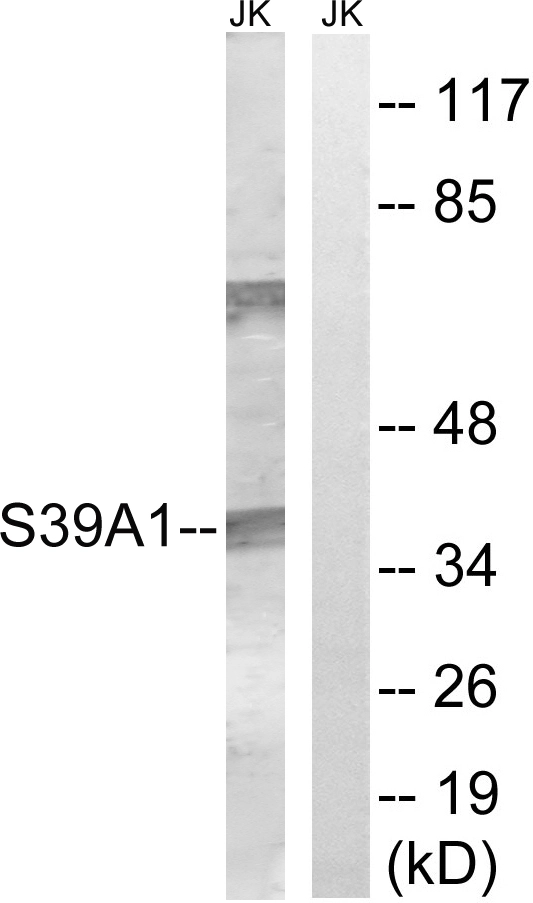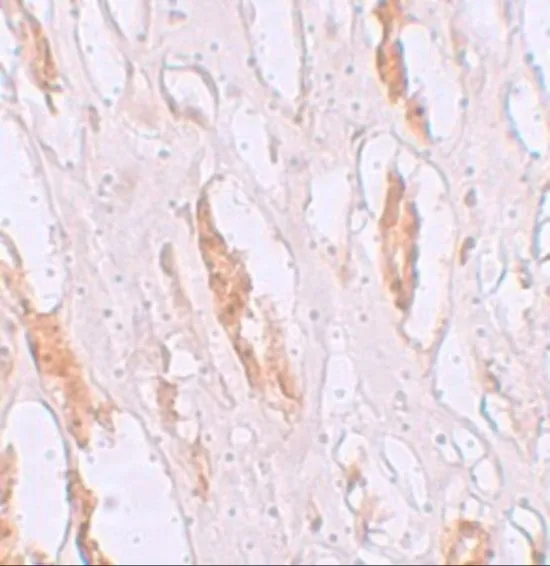
IHC-P analysis of human kidney tissue using GTX85135 ZIP1 antibody. Working concentration : 2.5 microg/ml
ZIP1 antibody
GTX85135
ApplicationsWestern Blot, ELISA, ImmunoHistoChemistry, ImmunoHistoChemistry Paraffin
Product group Antibodies
TargetSLC39A1
Overview
- SupplierGeneTex
- Product NameZIP1 antibody
- Delivery Days Customer9
- Application Supplier NoteWB: 1 - 2 microg/mL. IHC-P: 2.5 microg/mL. *Optimal dilutions/concentrations should be determined by the researcher.Not tested in other applications.
- ApplicationsWestern Blot, ELISA, ImmunoHistoChemistry, ImmunoHistoChemistry Paraffin
- CertificationResearch Use Only
- ClonalityPolyclonal
- Concentration1 mg/ml
- ConjugateUnconjugated
- Gene ID27173
- Target nameSLC39A1
- Target descriptionsolute carrier family 39 member 1
- Target synonymsZIP1, ZIRTL, zinc transporter ZIP1, ZRT/IRT-like protein 1, solute carrier family 39 (zinc transporter), member 1, solute carrier family 39 (zinc transporter), member 3, zinc transporter 1, zrt- and Irt-like protein 1
- HostRabbit
- IsotypeIgG
- Protein IDQ9NY26
- Protein NameZinc transporter ZIP1
- Scientific DescriptionZIP1, also known as ZIRTL (zinc-iron regulated transporter-like), is the first mammalian member of a family of divalent ion transporters. Zinc is an essential ion for cells and plays significant roles in the growth, development, and differentiation. ZIP1 expression is markedly downregulated in a number of cancerous tissues and is thought to function as a tumor suppressor gene in prostate cancer. More recent studies have shown that overexpression of ZIP1 and concomitant increased levels of intracellular zinc in PC-3 cells cause a significant inhibition of NF-kappaB, leading to down-regulation of the antiapoptotic protein Bcl-2, Bcl-XL, and the apoptosis inhibitor XIAP, reducing the malignant potential of prostate cancer cells in vitro and in vivo.
- Storage Instruction-20°C or -80°C,2°C to 8°C
- UNSPSC12352203
References
- Rafało-Ulińska A, Poleszak E, Szopa A, et al. Imipramine Influences Body Distribution of Supplemental Zinc Which May Enhance Antidepressant Action. Nutrients. 2020,12(9). doi: 10.3390/nu12092529Read this paper

